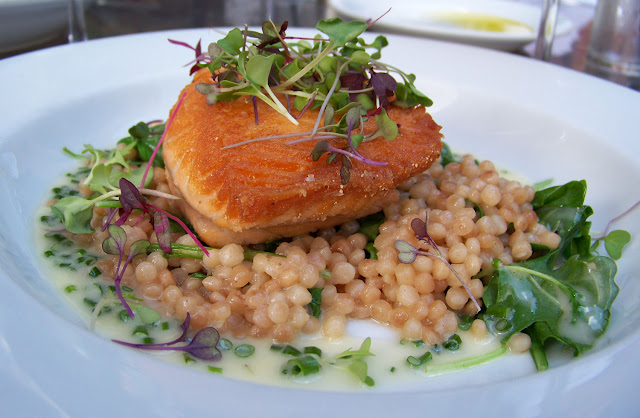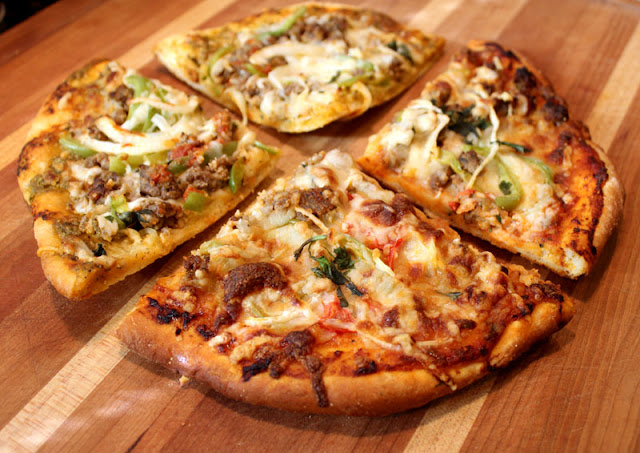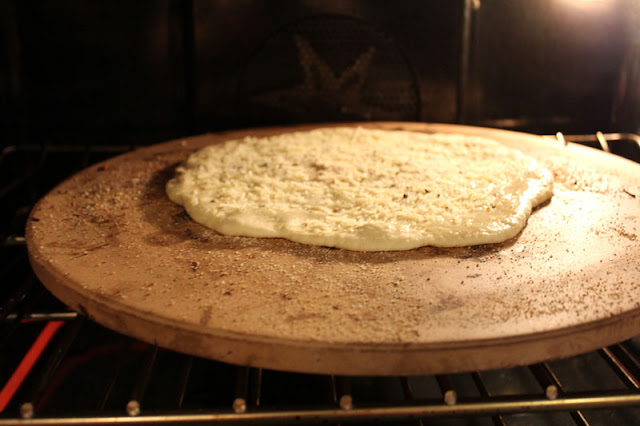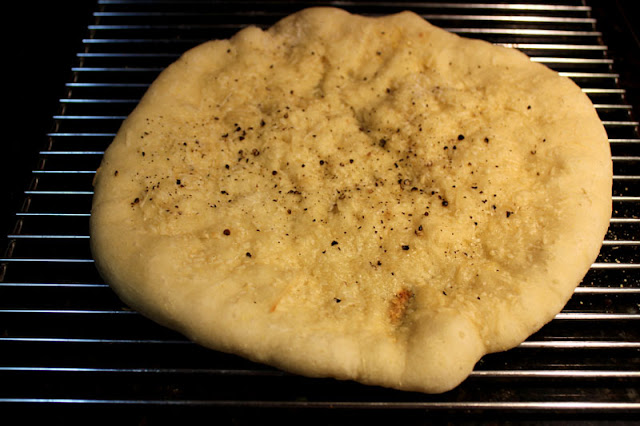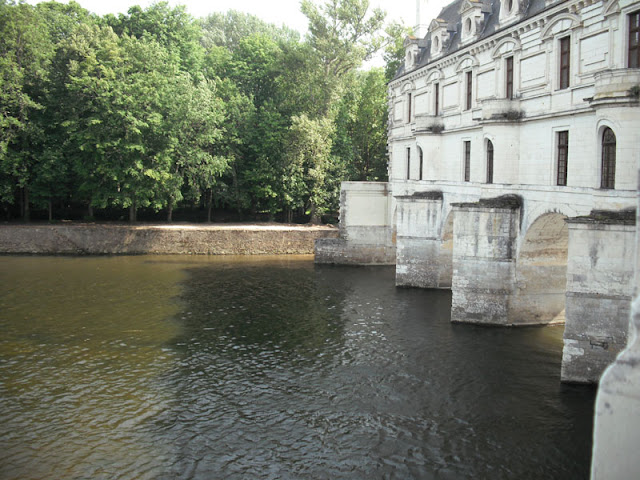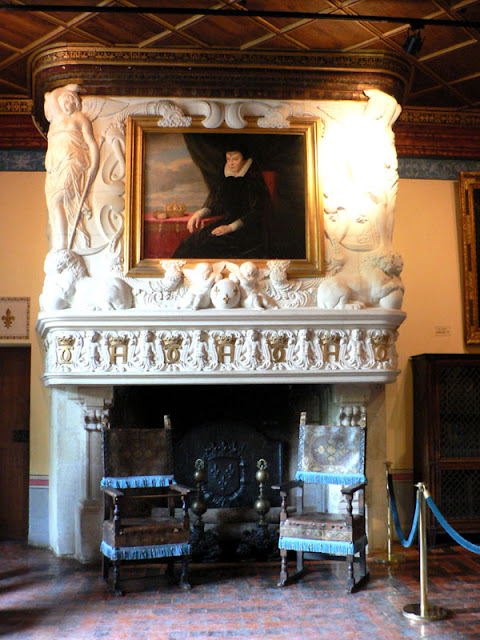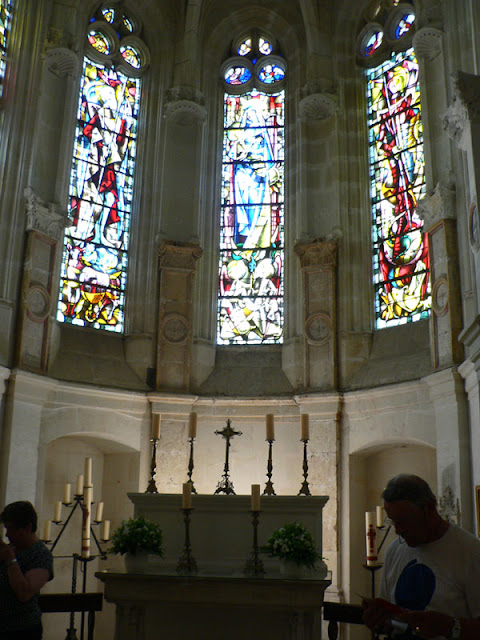In my last post I mentioned a salmon dish that I had at Fig, a French Bistro in Asheville. I have been experimenting with it to see if I could duplicate it. My finished dish is above. Below is the dish at Fig.
There are several steps that need to be done to get this dish on the plate and I had a few obstacles to overcome. While I was preparing my salmon dish, violent thunderstorms were raging outside the house. I expected that we would lose power at any second. When you live in the mountains surrounded by trees, power outages are a regular occurrence, so my focus was a little scattered.
What makes the salmon, greens and couscous come together is the lemon, chive beurre blanc sauce. I was not happy with the results the first time I made it, but the recipe I used this time was a winner.
You start by reducing wine, lemon juice and shallots.
When the sauce is reduced to a few tablespoons, add cold butter cubes a few at a time. The sauce thickens to a silky consistency. Then you add the snipped chives.
You can keep the sauce warm while you precede to the next steps. For this dish I used red Swiss chard but you could use any of a number of greens; Rainbow chard, kale or micro-greens as was used in the dish when we had it in early Spring. I like the stems of the red chard so I first sauteed them with some onions.
Add the washed greens and cook until they are wilted.
I made the couscous next, but did not snap a picture of it. When all of these components are ready you can begin your salmon. The technique is very simple but produces great results. Sprinkle the top of center cut salmon fillets with kosher or course sea salt. Saute them in an iron skillet salted side down over high heat until they are golden brown.
After they are browned on one side, flip them over and place in the oven to finish cooking for a few minutes.
After that it is just a matter of assembly. Place the couscous in a bowl, top with the sauteed greens, place the salmon on top and drizzle the beurre blanc around the edges of the bowl.
I was happy with the results. The salmon was crusty on the top and flaky inside. The beurre blanc was decadently delicious and we didn’t lose power until the meal was completed and the dishes were in the dishwasher. All and all, it couldn’t have been better.
SALMON WITH SWISS CHARD AND COUSCOUS
For theLemon Chive Beurre Blanc:
1 to 2 shallots, chopped fine
1 cup white wine
1/4 cup lemon juice
1 tablespoon heavy cream
1 1/2 sticks cold unsalted butter, cubed
Salt and white pepper to taste
Snipped chives
Add shallots, wine and lemon juice to a saucepan and cook over high heat until it is reduced to about 1/4 cup. Add the cream and heat until it bubbles. Reduce the heat to low. Add the butter a few cubes at a time and whisk on and off the heat until incorporated. Continue with a few cubes at a time until all of the butter is added and the mixture is fully emulsified and has a creamy consistency. Season with salt, white pepper and chives. This will stay warm if you are using it within a 30 minute period. Just whisk it occasionally.
For the Swiss Chard:
1 bunch of Red or Rainbow Chard
olive oil
1/2 onion, chopped
salt and pepper to taste
Wash the chard thoroughly in a sink full of cold water. Remove the stems and chop the greens. Using some of the stems, chop them along with the onion. Saute stems and onion in a skillet until onion and stems are softened. Add the drained greens and salt and pepper to taste. Cover the skillet and cook the greens just until they are wilted.
For the Couscous:
Follow the instructions on the box or cook couscous in a pot of boiling water for about 10 minutes or until it is cooked through. Drain and season with salt and pepper.
For the Salmon:
2 6 to 8 ounce center cut salmon fillets, skinned
1/2 tablespoon olive oil
1/2 tablespoon unsalted butter
Kosher salt or course sea salt
Preheat oven to 375 degrees F. Sprinkle salt on top side of salmon fillets. Heat oil and butter in a skillet over high heat. Add salmon fillets salted side down and cook over high heat until browned and crisp. Turn fillets over. Place pan in oven and roast until they are just flaky, about 5 to 6 minutes.
Assembly: This dish is best plated in large individual bowls. Add couscous to each bowl. Top with greens. Place salmon fillets on top of each. Drizzle beurre blanc around the edges of the dish. Garnish with additional chives if desired.









